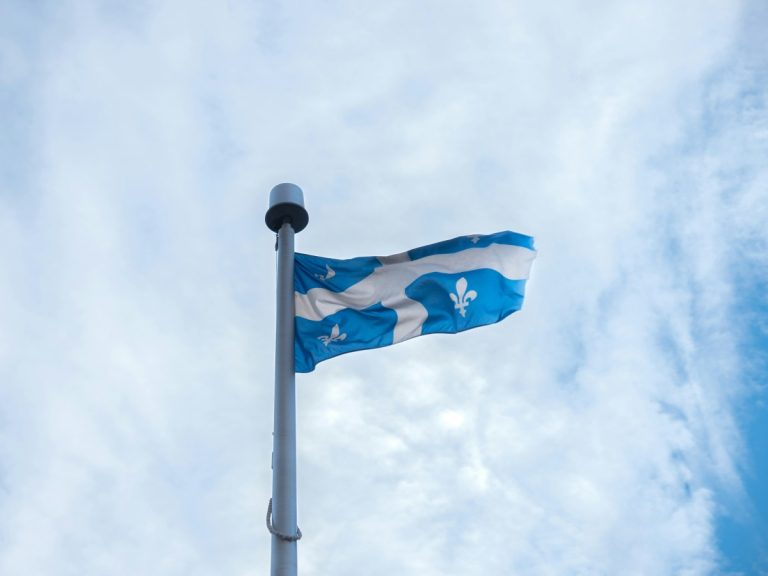Child Healthcare in Québec (and Other Provinces): A Mom’s Guide
Many families—whether in Québec, Ontario, or British Columbia—move here as newcomers and often wonder how children’s healthcare works in Canada. As an immigrant mom, I’ve navigated the system myself, and specifically, understanding healthcare in Quebec was a significant learning curve. This clear, updated guide will walk you through child healthcare in Quebec and other provinces across Canada, offering practical insights for newcomer families.
1. RAMQ Health Card (Québec)
After arriving in Quebec, applying for your RAMQ health card is a top priority, ideally within 15 days. It’s crucial to know that Quebec covers children from day one under RAMQ. You’ll need:
- Proof of status (PR card or CSQ)
- Québec address
- Optionally, proof of previous insurance if eligible to waive the waiting period
Online registration for the RAMQ health card is available at the RAMQ website. While coverage for healthcare in Quebec typically starts by month three for adults, children often receive immediate coverage. Other provinces, like Ontario with OHIP or British Columbia with MSP, run similar systems, but always check each province’s specific newcomer timelines for health coverage.
2. Registering for a Family Doctor or CLSC
In Québec and other provinces, having a family doctor is essential because they’re your main point of contact for most health issues and referrals. But getting one isn’t always easy. You can register through the official GAMF platform (Guichet d’accès à un médecin de famille), which is available here. After registering, you’ll be added to a waiting list—most of families wait over a year. In the meantime, local CLSCs and the 811 phone line are useful alternatives for non-emergency care.
Those without a doctor can:
- Call Info‑Santé/Info‑Social at 811 (24/7 nurse line)
- Visit your local CLSC without an appointment for basic care, vaccinations, and mental health support
In Ontario and elsewhere, nurse lines (e.g., Ontario Telehealth 811) and community health services offer similar support.
3. Eyes & Teeth: Using Public & Private Clinics
- Dental care: varies by province. In Québec, the public RAMQ system covers certain dental surgeries for children under 10, but routine checkups and cleanings usually require private dental care. Most general dental clinics accept children starting around age 3. For younger toddlers and babies, we went to a pediatric dentist, which felt more appropriate and reassuring. In contrast, some provinces like Ontario offer free basic dental services for children—check your provincial health website for details.
- Vision tests: In many provinces, including Québec, eye exams are covered for children under 18 through public health insurance. Just remember to bring your RAMQ card or provincial health card to the appointment. In Québec, there’s also a RAMQ reimbursement program that helps cover the cost of glasses or contact lenses for children. You can usually get vision tests done at a nearby optometrist or even at a local eyewear store with an in-house optometrist. We had our kids’ eyes checked this way, and it was a smooth and convenient experience.
4. Emergency Room Procedures & Wait Times
For emergencies, always dial 911 first. Québec offers a real-time ER-wait dashboard. Average non-urgent wait is so LONG(quebec.ca). Ontario’s public health sites provide similar ER occupancy information, so always check local hospital or provincial health unit websites before heading out for non-critical issues. Understanding emergency healthcare in Quebec is vital for all families.
5. Employer Health Benefits & Virtual Care Apps (Dialogue etc.)
One thing many newcomers are surprised to learn is that your employer’s private insurance can make a huge difference in how quickly your child can access healthcare services.
In Québec and other provinces, the public system is reliable but often slow—especially for non-urgent appointments. If your workplace offers private insurance (Manulife, Sun Life, Canada Life, Beneva, Desjardins, etc.), here’s how it can help:
✔ What employer insurance usually covers:
- Private or pediatric physiotherapy
- Speech therapy
- Occupational therapy
- Psychologists & social workers
- Some dental or vision benefits
- Faster access to allied health providers
Even if it doesn’t speed up RAMQ-access doctors, it gives you faster access to specialists outside the RAMQ system, which often makes a huge difference for children.
✔ Virtual healthcare apps (Dialogue, Maple, Telus Health, etc.)
If your employer offers Dialogue or similar virtual-care platforms:
- You can speak to a nurse or doctor in minutes
- Get prescriptions, referrals, or medical notes
- Get guidance on whether your child needs ER or not
- Often available 24/7
From my experience as a mom, having Dialogue made navigating the system so much easier—especially since getting a family doctor in Quebec can take several years.
For newcomers, this is one of the biggest hidden advantages of having employer benefits.
6. Booking Vaccines & Clinics Through Clic Santé (Québec)
If you’re in Québec, Clic Santé is one of the most useful tools for parents.
It allows you to book:
- Child vaccinations
- Flu shots
- COVID vaccines
- Some blood tests
- Travel vaccines
- Routine nursing appointments at CLSCs
You simply select your region, choose a service, and book online—no need to call.
✔ Why Clic Santé matters for families:
- CLSC appointments fill up fast
- Many services don’t require a family doctor
- It’s available in English & French
- You can monitor appointment availability across multiple clinics
For newcomers without a doctor yet, Clic Santé becomes one of the easiest ways to access the public system for your kids.
✅ Key Takeaways for Healthcare in Quebec :
- RAMQ: Apply ASAP after arrival—aim for coverage by month three.
- Health access: Use 811 for advice or minor issues and CLSC/FM G if no doctor yet.
- Specialist care: Eyes and teeth are generally private—check-dependent.
- Emergencies: Use 911, and check hospital wait times online before heading out.
🔗 Useful Links:
After all the paperwork and health appointments, you might need a little break! Discover 6 fun and kid-friendly places to visit in Montreal’s South Shore to relax and recharge as a family.
🧭 Final Thoughts: The Good, the Bad, and What to Expect
In Québec and across Canada, the publicly funded healthcare system means doctor visits and hospital care are covered by taxes. This offers a big relief, especially for families with young kids, when it comes to managing child healthcare costs. However, as an immigrant mom from South Korea, I was honestly surprised by how slow and less specialized it can feel.
Back home, accessing an ophthalmologist, dermatologist, or pediatric specialist directly is easy, and regular health screenings often start at a younger age with fast appointments. This feeling of technological difference was vividly reinforced when my child got an ear infection. In Korea, even local clinics use advanced digital otoscopes where the doctor and parent can clearly see the inside of the ear on a screen together. It was frankly shocking when the doctor here in Quebec simply used an older model otoscope to look directly into the ear canal, just like doctors did when I was a child in the 80s and 90s. The technology gap felt significant, and it highlighted how much simpler and less high-tech the diagnostic process can be here compared to the highly efficient system I was used to. In Canada, every step often goes through a family doctor first, and finding one can take months, which is a common challenge for newcomers navigating healthcare in Quebec.
Also, while care is technically ‘free,’ many crucial services for child healthcare, like routine dental care, certain eye care, or private therapy, aren’t fully covered unless you have additional private insurance. And ER visits in Quebec? You might wait hours unless it’s a truly life-threatening situation. That said, there’s immense peace of mind knowing that if something serious does happen, you’re financially covered by the Canadian healthcare system. You just need a bit more patience, planning, and flexibility than what we’re used to in countries with a private-based model.
So, if you’re a newcomer like me, don’t worry—you’re not alone in feeling overwhelmed by healthcare in Quebec. It does get easier. And I hope this guide makes your family’s health journey in Québec (or anywhere in Canada) just a little bit smoother. 💛






